At around 2.45 p.m. (CET) on 14 January 2024, there was an attack on a US Navy ship in the sea area off Hodeidah. According to reports from US Central Command, the missile fired at the "USS Laboon" (DDG 58, 1st batch, in service since 1995) was intercepted and neutralised by an unidentified US fighter aircraft. There was no evidence of damage to people or material. The missile was fired from a Houthi-controlled area in south-west Yemen. The "USS Laboon" is part of the American forces of Operation Prosperity Guardian.
The attack on "USS Laboon" took place two days after the US and UK attacked Houthi targets in Yemen. In the attacks, which involved several warships and aircraft launched from bases in the Mediterranean, the US and the UK hit radar systems, production facilities and ammunition depots, among other things, USNI News reported.
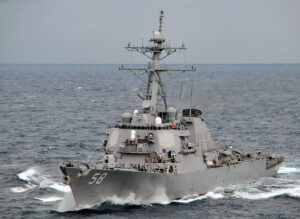
USS Laboon (DDG 58) Photo: US-Navy/D.Barker
The hostile actions of the Houthi against shipping in the Red Sea began on 19 November 2023 with the hijacking of the merchant ship "Galaxy Leader". Since then, there have been 27 verified attacks by Houthi forces on commercial maritime transport. The 28th targeted a US warship and can be included in the retaliation announced by the Houthi leader, Abdul-Malik Badr al-Din al-Houthi, to the air strikes of 11 January. According to the Pentagon, units of the US and UK armed forces struck more than sixty targets in sixteen Houthi locations last Thursday. According to the Yemeni armed forces, there were as many as 73 airstrikes. A second attack took place on 13 January, this time using Tomahawk cruise missiles from the "USS Carney" (DDG 64). Washington emphasises that Thursday's attacks were carried out independently of Operation Prosperity Guardian.

Iranian sea destination FK Al Mandeb 2 (Ghadir). Photo: Houthi Media
A look at the Houthi arsenal
The Houthis have a considerable number of missile systems that could have played a role in the attack on 14 January. Some of these were demonstrated at the parade to mark the 9th anniversary of the Yemeni revolution in Sanaa on 21 September 2023. In addition to the long-range ballistic systems (up to 1,400 kilometres) on display, missiles for maritime use were also shown. Although the Russian SS-N-2 (Styx) and Chinese Al Mandeb 1 from the time before the takeover were still intended for coastal defence, the systems of Iranian provenance such as Ghadir and Paveh, which are being replicated in Yemen in local production, were much more modern. According to experts, they all have a range of 150 - 200 kilometres and further, which means they can easily reach from coastal positions on the Red Sea into shipping lanes. This means that target identification and discrimination pose further challenges. This is where drones may play an important role.
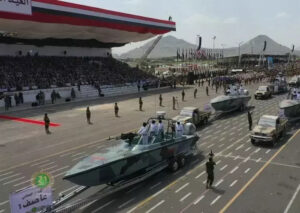
Naval warfare equipment from Iranian production. Photo: Al Houthi Group Media Office
Other capabilities of the Huthi's maritime arm were also demonstrated at the parade: fast attack boats, various sea mines and remote-controlled boats. Mines can be deployed in a decentralised and covert manner, whereby the Huthi can make use of coastal shipping in the day-to-day regional exchange of goods. The use of remote-controlled boats with explosive charges opens up opportunities for sabotage. All of these are familiar methods used by the Houthi militias. However, this also means that the recent air strikes against the Houthi communication and surveillance centres were not directly aimed at the maritime threats in the region.
Missile defence
The defence against the missile attack by the US forces underlines the role of aircraft in air defence. No details were given about the aircraft or its location. The aircraft carrier group around the "USS Dwight D. Eisenhower" is currently operating in the Gulf of Aden and the Red Sea. The operation is somewhat complex. Once the launched missile has been detected and identified, there is not much time for target designation and engagement. In this respect, the incident also provides an insight into the approach of the American and British armed forces. They go to great lengths to ensure permanent surveillance, from which targeted defence is possible in the first place. There is also a high degree of coordination.
Chinese sea target missile Al Mandeb 1 of the Houthi militia. Photo: Houthi Media
Chinese sea target missile Al Mandeb 1 of the Houthi militia. Photo: Houthi Media
Iranian-Yemeni sea target missile Falaq 1 of the Houthi militia. Photo: Houthi Media
Iranian-Yemeni sea target missile Falaq 1 of the Houthi militia. Photo: Houthi Media
Russian sea target missile Rubesh P15 Termit of the Houthi militia. Photo: Houthi Media
Russian sea target missile Rubesh P15 Termit of the Houthi militia. Photo: Houthi Media
Mirsad 2 drone squadron (September parade). Photo: MEMRI JTTM
Mirsad 2 drone squadron (September parade). Photo: MEMRI JTTM
Khatif drone squadron (September parade). Photo: MEMRI JTTM
Khatif drone squadron (September parade). Photo: MEMRI JTTM
Weapons parade of the Huthi militias in Sanaa on 23 September 2023 Screenshot: mmy.ye
Weapons parade of the Huthi militias in Sanaa on 23 September 2023 Screenshot: mmy.ye
Weapons parade of the Houthi militias in Sanaa on 23 March.
Weapons parade of the Huthi militias in Sanaa on 23 September 2023 Screenshot: mmy.ye


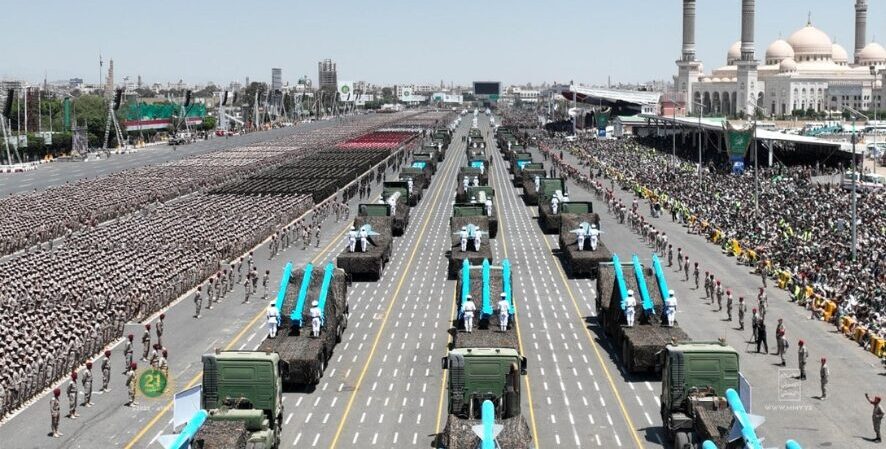






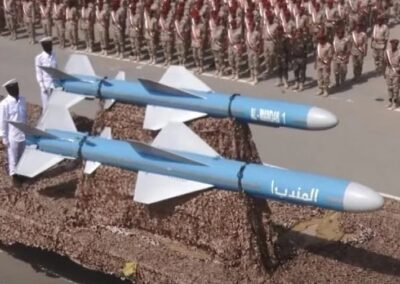

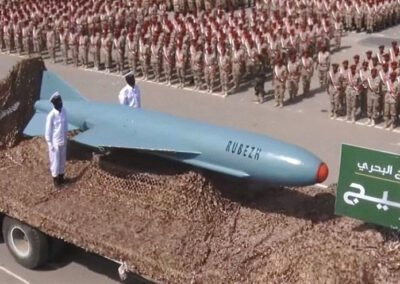
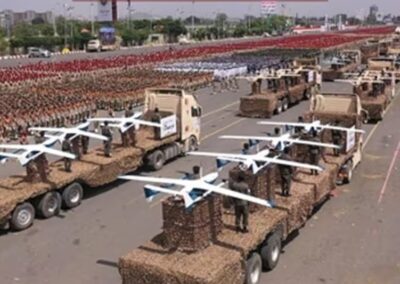
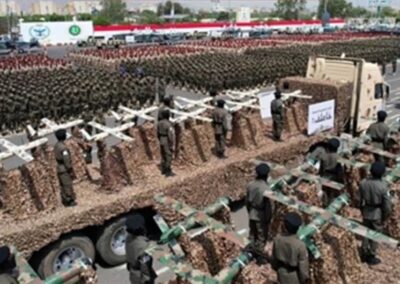
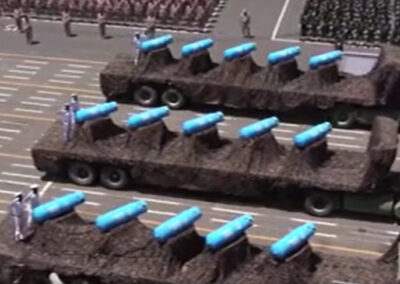
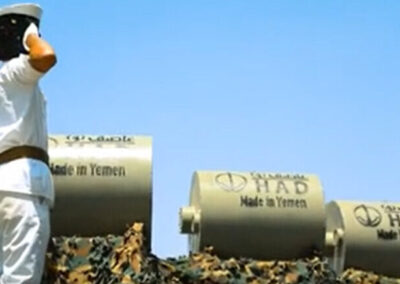




0 Kommentare